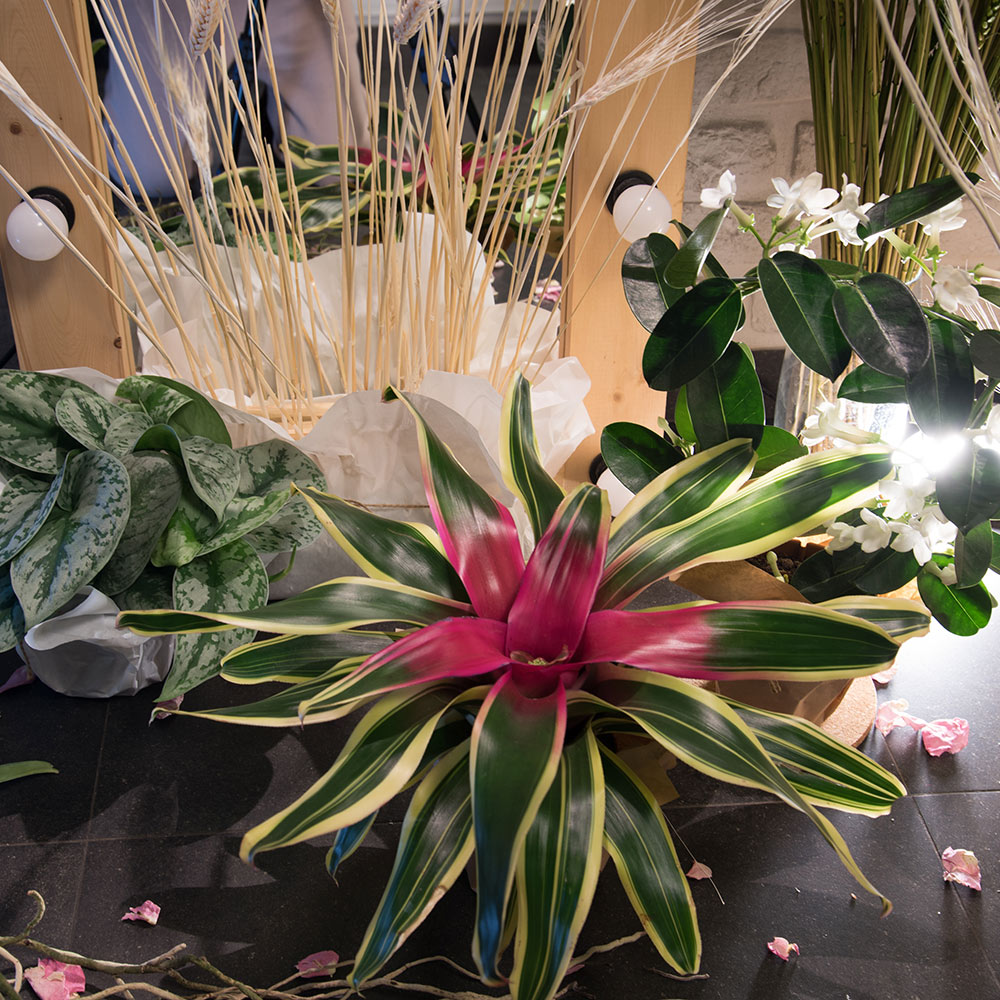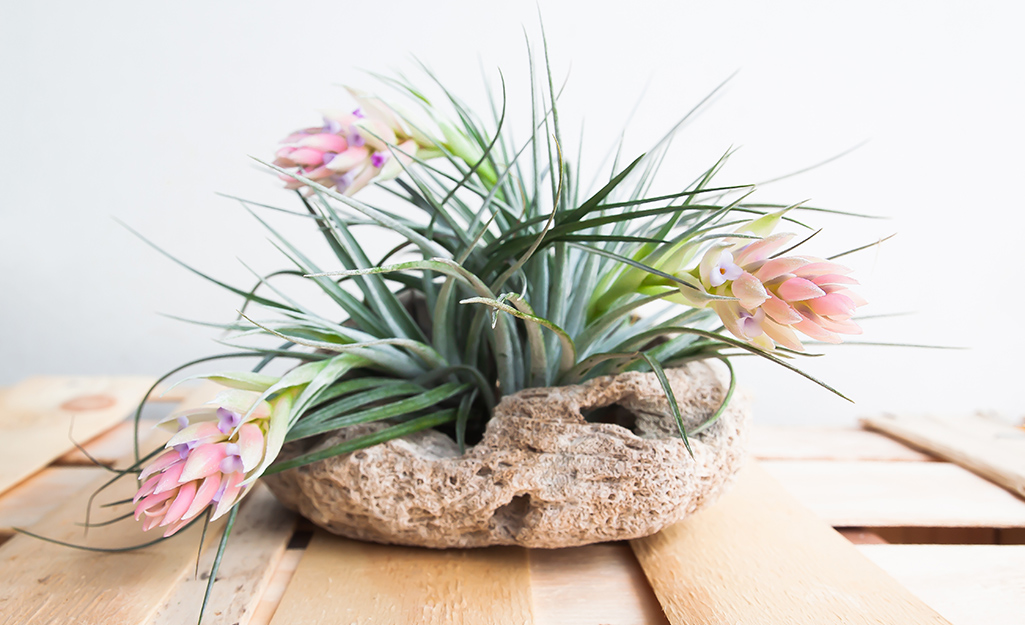
Bromeliads are naturals for the indoor gardener. With their bold colors and easygoing ways, they make stunning houseplants.
The defining characteristic of bromeliads are the rosettes of sturdy leaves with either a brightly colored center or a flower stalk.
The bromeliad (bro-ME-li-ad with a short “a”) is native to Central and South America and sends up flower stalks in pink, orange and red against glossy jade green foliage or banded gray green stripes.
Learn About Bromeliads and Air Plants

Bromeliads are usually epiphytic, relying on plants for structural support. They do not rely on them for nutrients. This family of tropicals includes staghorn ferns, tillandsia and Spanish moss. These plants don’t need soil to grow.
Tillandsia is better known as an air plant, the spidery plants that can grow anywhere there’s light, air and warm temperatures.
Caring for Bromeliads

Bromeliads require well-draining potting mix. They come with their own water reservoir — just fill up the cup at the base of the plant.
For best results with bromeliads indoors, try to replicate their native environment as much as possible.
If kept in a moist environment, you may not need to water them at all, and just let the humidity do its work.
To create a humid environment, fill the plant saucer with rocks, and then with water. The plant will get the benefit of moisture without danger of root rot.
Bromeliads as Houseplants

Although they like humidity, bromeliads have a reputation for handling occasional neglect with ease, making them ideal houseplants for travelers and gardening newbies.
If your plant looks parched, you can always give it a spritz from a plant mister.
In the case of tillandsia, an occasional rinsing in a bowl of room-temperature water will take care of dust and refresh the plant.
Place bromeliads near a sunny window in a room where temps stay above 55 degrees Fahrenheit.
Bromeliads like sunlight, but be cautious of too-bright light that may damage their leaves. Filtering with a sheer curtain or moving the container back from the window may be necessary.
For bromeliad aechmea, and others with flower stalks, when the main flower stalk fades, the plant may decline a little bit. Cut off the flower stalk. Don’t panic, continue care as usual and look for the “pups” at the base of the plant. These are new plants that will continue to grow.
Bromeliads are gorgeous plants that can add color to your home or garden. Use The Home Depot Mobile App to get everything you need shipped straight to your door.

























